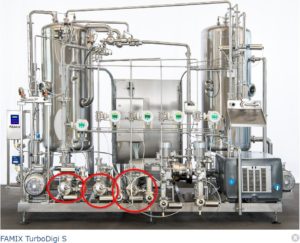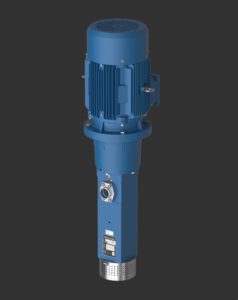Editorial: Understanding Viscosity
How to measure Viscosity
One way is to measure a fluid’s resistance to flow when an external force is applied. This is dynamic viscosity and the unit of measure for dynamic viscosity is Centipoise (cP)
The other way is to measure the resistive flow of a fluid under the weight of gravity. The result is kinematic viscosity. So kinematic viscosity is the measure of a fluid’s inherent resistance to flow when no external force, except gravity, is acting on it. The unit of measure of kinematic viscosity is Centistokes (cSt).
What’s the difference between dynamic and kinematic viscosity?
A basic difference between the dynamic and kinematic viscosity measurements is density. Density actually provides a way to convert between a kinematic and a dynamic viscosity measurement. The formula for the conversion is:
Kinematic (cSt) x Density = Dynamic (cP)
Dynamic (cP) / Density = Kinematic (cSt)
Density is the ratio of the mass (or weight) of the sample divided by the volume of the sample. Think about an 1cm3 ice cube and a 1cm3 cube of steel. They may be the same size, but the steel cube weighs more than the ice cube. Therefore, we say that steel has a greater density than ice.
Kinematic viscosity is used to measure Newtonian liquids, dynamic viscosity for non-Newtonian liquids. In simple terms, a Newtonian fluid’s viscosity remains constant, no matter the amount of shear applied for a constant temperature (e.g. water, alcohol, mineral oil). Non-Newtonian fluids are the opposite of Newtonian fluids. When shear is applied to non-Newtonian fluids, the viscosity of the fluid changes (e.g. tomato ketchup, glue, quicksand).
Effect of viscosity on centrifugal pumps
Viscosity will have significant effects on flow rates and pressure capabilities of centrifugal pumps as well shaft torque and available power, the efficiency will obviously be lower. Anything over 25cP will have a significant effect on the performance of a centrifugal pumps. There are ways to calculate (or ascertain from charts) but that is beyond the remit of this paper, so for practical purposes:
The maximum viscosity:
Assoma pump can handle is 150 cP (due to torque transmission through the magnets)
Crest can handle is 300 cp (under certain circumstances higher values may be tolerated
Viscosity Comparison (centipoise @ 20 degrees C)
| Methanol | 0.6 |
| Water | 1 |
| Milk | 3 |
| Blood | 10 |
| Anti-freeze (Ethylene Glycol) | 15 |
| Olive oil | 84 |
| Motor Oil – SAE20 | 140-420 |
| Motor Oil – SAE40 | 650-950 |
| Castor Oil | 966 |
| Glycerin | 1490 |
| Honey | 10,000 |
| Treacle | 20,000 |
Viscosity Conversion
1 poise = 100 centipoise (cP)
Centipoise (cP) = Centistokes (cSt) x S.G.
Centistoke (cSt) = Centipoise (cP) / S.G.
Source: Crest Pumps Ltd







